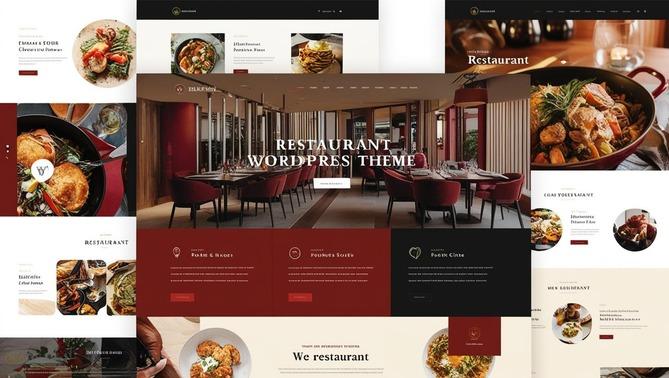Notifications

10 minutes, 51 seconds
-13 Views 0 Comments 0 Likes 0 Reviews

In today's digital-first world, your restaurant's website is often the first taste customers get of your establishment. A compelling food website should stimulate appetite, convey your unique atmosphere, and make booking a table or ordering takeout effortlessly simple. This guide will walk you through creating a restaurant website that doesn't just inform visitors but actively entices them to become paying customers.
Before diving into design elements and features, it's essential to understand what visitors are seeking when they land on your food website. Studies show that most restaurant lite website visitors are looking for:
When building your website, addressing these core needs should be your primary focus. Everything else, while potentially valuable, is secondary to these fundamental elements.
Nothing sells food like beautiful images. Professional food photography is one of the most worthwhile investments you can make for your restaurant's online presence. Unlike generic stock photos, professional shots of your actual dishes create authentic desire and set accurate expectations.
When planning a photoshoot:
Remember that visitors "eat with their eyes first," especially online where they can't smell or taste your creations.
Your menu is likely the most important content on your website. Make it:
Avoid the common mistake of only providing a PDF menu, as this creates barriers for mobile users and those using screen readers. The best approach is having your menu directly on the website in HTML format with a downloadable PDF option.
Nothing frustrates potential customers more than complicated booking processes. Whether you're focusing on dine-in service, takeout, or both, make these transactions as seamless as possible:
Each additional step in the reservation or ordering process increases the likelihood of abandonment. Aim for the minimum number of clicks possible.
This seemingly basic information is critically important and should be prominently displayed:
Consider placing a simplified version of this information in your website footer so it appears on every page.
While custom-built websites offer maximum flexibility, they often come with higher development and maintenance costs. For most restaurants, a content management system (CMS) like WordPress provides the perfect balance of functionality, ease of use, and affordability.
WordPress powers over 40% of the web for good reason—it's flexible, has a massive ecosystem of plugins and themes, and can be updated by staff with minimal technical training. Restaurant WordPress themes specifically designed for food businesses offer pre-built layouts and features tailored to the industry's unique needs.
When evaluating Restaurant WordPress themes, look for these key features:
Some popular Restaurant WordPress themes include options like Divi Restaurant layouts, Resto, Menufy, and Gastronomy, each offering different aesthetics and feature sets to match various cuisine types and dining experiences.
Beyond the essential elements, your website content should tell your restaurant's story and build emotional connection:
Share what makes your restaurant special:
This narrative content helps visitors connect with your brand on a deeper level and can be the deciding factor between choosing your establishment or a competitor.
Beyond just listing menu items, create dedicated content around:
This content adds depth to your website and gives visitors specific reasons to choose your restaurant for different occasions.
Nothing sells like satisfaction:
Social proof builds trust and shows potential customers that others have enjoyed experiences at your establishment.
While visual appeal is paramount for food websites, technical performance directly impacts user experience and conversions:
With most restaurant searches happening on mobile devices, your site must:
If using Restaurant WordPress themes, ensure they're fully responsive and test them on multiple devices before launching.
Hungry people are impatient people. For every second your site takes to load, you lose potential customers:
A one-second delay in page response can result in a 7% reduction in conversions, making speed optimization essential for business success.
While avoiding SEO gimmicks is wise, certain best practices help ensure local diners can find you:
These basics help ensure you appear in relevant local searches without resorting to keyword stuffing.
A restaurant website is never truly "finished" - it requires ongoing attention:
Calendar regular website review sessions with your team to ensure all information remains accurate and fresh.
Creating a food website that converts visitors into diners involves much more than just putting your menu online. By focusing on beautiful presentation, essential information, frictionless transactions, and authentic storytelling, you can create a digital experience that truly represents your physical establishment.
When selecting from the best WP themes for your restaurant, prioritize those that allow you to showcase what makes your establishment unique while providing the functionality modern diners expect. Remember that your website is an extension of your hospitality—it should make visitors feel welcomed, informed, and excited about the dining experience to come.

